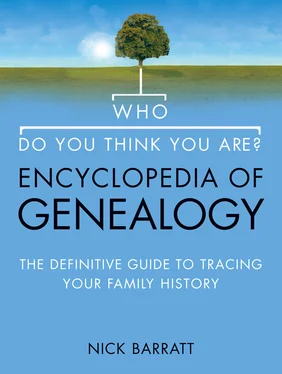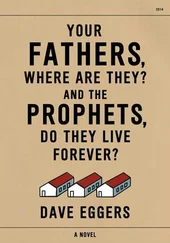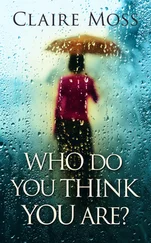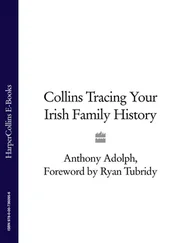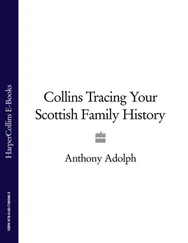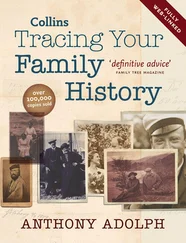Civil Registration in Scotland
Scotland has its own civil registration process, and the records are known as Statutory Registers. Civil registration was begun slightly later than in England and Wales, in 1855, but the certificates are more detailed then their counterparts across the border. Indeed, the earliest ones in 1855 are particularly detailed, though the sheer amount of information requested proved very difficult to record and thereafter the list of questions was simplified somewhat.
Additionally, the civil registration records are held in the same place as the parish records, in the General Register Office of Scotland (GROS) in Edinburgh. It is therefore possible to conduct a large amount of your genealogical research in the same place, which can simplify things greatly. The GROS levies charges for anybody using their services. These charges vary depending on whether you wish to visit the office for one day, one week or annually. At time of going to print the daily rate is £17 and the weekly rate £65. It is also advisable to book an appointment before visiting as there are only a limited number of spaces and the office may be fully booked.
Another advantage that the Scottish records have is that the indexes are fully computerized, which means you can search for a specific entry by name across the entire period. The computer database contains summaries of microfiche registers that contain the entire entry, and this latter entry is the one required for ordering copies of the certificates at GROS.
Birth indexes include the mother’s maiden name from 1929 onwards. The certificates themselves are similar to the English and Welsh certificates in giving the full name, the child’s sex, when and where (including time) they were born, the father’s full name and occupation along with the mother’s name (and maiden name), and similar details are provided relating to the registration details. However, where Scottish birth certificates differ is that they provide the details (time and place) of the marriage of the parents, including any other married names. In 1855 the certificates also stated the birth details of the parents along with details of other siblings, but this was quickly deemed too much information and was not given from 1856 onwards. The years 1856 to 1860 do not give marriage details of the parents either.
Indexes are arranged separately by bride and groom. However, from 1855 to 1863 and then from 1929 you can find entries for brides in both their maiden names and their married names. The certificates themselves also note where and when the marriage took place, the type of marriage ceremony, full names, ages, marital status and occupation of the bride and groom. The additional details peculiar to Scottish certificates are the occupation and maiden names of the mother of each party. In 1855 only the certificates also state where the bride and groom were born and any previous marriage (along with names of any other children from the previous marriage).
The indexes for these certificates are arranged thus:
• Age at death is provided from 1866 onwards
• The maiden name of the deceased’s mother from 1974 onwards
• Deceased married women are indexed by their married and maiden name after 1858
The registers themselves detail the name, age, exact time and location of death, the person’s occupation and their marital status. Medical causes of death are also provided. Scottish certificates give the name of the deceased’s spouse from 1861 (and in 1855) and the names of the deceased’s parents (including the mother’s maiden name). The earliest certificates of 1855 state where the deceased was born and how long they lived there, along with the details of any children (their ages and if they were still alive). From 1855 to 1860 burial details of the deceased are also provided.
There is a central website – www.scotlandspeople.gov.uk – that allows you to search by name the statutory registers of births (1855–1906), marriages (1855–1931) and deaths (1855–1956), as well as the old parish registers (which are covered in Chapter 7). You can search and download images of these registers for this period without needing to travel to the GROS in Edinburgh, although the website does charge to access this information.
The Society of Genealogists holds copies of indexes for Scottish statutory registers for the years 1855 to 1920. You may also be able to find indexes at various local family history societies.
Civil Registration in Ireland
Although civil registration for Protestant marriages began from 1 April 1845, the comprehensive civil registration of births, marriages and deaths was introduced to Ireland later, on 1 January 1864, on a similar model to that of England and Wales. These events would be recorded locally at the district registrar’s office and then copies passed on to the General Register Office in Dublin. However, in 1922 the country was partitioned and divided into Northern Ireland and the Republic of Ireland. Subsequently, civil registration was also divided between those two territories and a separate office was opened in Belfast, Northern Ireland.
Republic of Ireland General Register Office
The General Register Office of Ireland (GROI) is located in Dublin and houses the national indexes along with microfilm copies of the originals for the entire country from 1 January 1864 until 31 December 1921. It also has the copies of all the early Protestant marriages, which were recorded from 1 April 1845. From 1 January 1922 the office records all events that occurred in the Republic of Ireland. You will be charged to search through the indexes and a further charge will be incurred for ordering any certified copies of the registers.
‘ Comprehensive civil registration was only introduced in Ireland in 1864 .’
The indexes are arranged alphabetically by the child’s surname and then forename. After 1902 the mother’s maiden name is included in the indexes. The actual date of birth of the child can be found in the indexes from 1903 to 1927.
The indexes are arranged by name of both the bride and groom. The registers themselves contain the same information as to be found on the English and Welsh certificates.
The age of the deceased is included in the indexes. There is no date of birth of the deceased in the modern registers. All other details tally with the information found on English and Welsh certificates.
General Register Office of Northern Ireland
Civil registration records are housed in the General Register Office of Northern Ireland (GRONI), Belfast, for all events in the six counties of Northern Ireland since 1922. The original registers for births and deaths from 1864 can also be found here.
Births are indexed in this office. From 1903 to 1921 the date of birth of the child is also provided. They are arranged in a similar manner to those for England and Wales.
Marriages are only to be found from 1922 onwards. Prior to that, if you are searching for a marriage in the six counties you may be able to find it in the applicable district registrar’s office.
You can find records covering the entire period since 1864, and they are arranged in a similar manner to those for England and Wales.
Читать дальше
